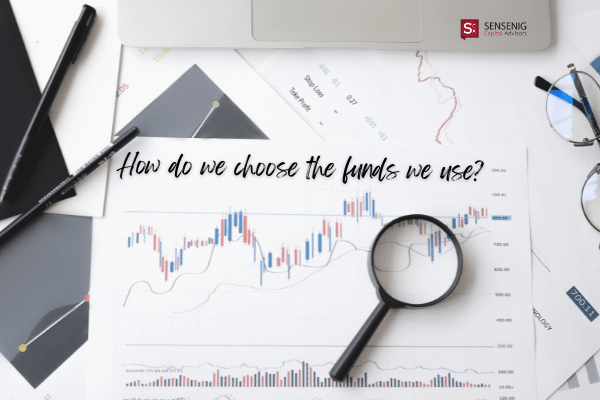If ever there were an appropriate analogy for how to invest for retirement, it would be the classic fable of The Three Little Pigs. As you may recall, those three little pigs tried three different structures to protect against the Big Bad Wolf. Similarly, there are at least three kinds of “building materials” that investors typically employ as they try to prevent today’s low interest rates from consuming their sources for retirement income:
- Dividend-yielding stocks
- High-yield bonds
- Total-return investing
In this three-part series, we’ll explore each of these common strategies and explain why the evidence supports building and preserving your retirement reserve through total-return investing. The approach may require a bit more prep work and a little extra explanation, but like solid brick, we believe it offers the most durable and dependable protection when those hungry wolves are huffing and puffing at your retirement-planning door.
Part I: Dividend-Yielding Stocks – A Straw Strategy
We understand why bulking up on dividend-yielding stocks can seem like a tempting way to enhance your retirement income, especially when interest rates are low. You buy into select stocks that have been spinning off dependable dividends at prescribed times. The dividend payments appear to leave your principal intact, while promising better income than a low-yielding short-term government bond has to offer.
 Safe, easy money … or so the fable goes. Unfortunately, the reasoning doesn’t hold up as well upon evidence-based inspection. Let’s dive in and take a closer look at that income stream you’re hoping to generate from dividend-yielding stocks.
Safe, easy money … or so the fable goes. Unfortunately, the reasoning doesn’t hold up as well upon evidence-based inspection. Let’s dive in and take a closer look at that income stream you’re hoping to generate from dividend-yielding stocks.
Dividends Don’t Grow on Trees.
It’s common for investors to mentally account for a dividend payout as if it’s found money that leaves their principal untouched. In reality, a company’s dividends have to come from somewhere. That “somewhere” is either the company’s profits or its capital reserves.
This push-pull relationship between stockholder dividends and company capital has been rigorously studied and empirically assessed. In the 1960s, Nobel laureates Merton Miller and Franco Modigliani published a landmark study on the subject, “Dividend Policy, Growth, and the Valuation of Shares.” In “Capital Ideas” (a recommended read on capital market history), Peter Bernstein explains one of the study’s key findings: “Stockholders like to receive cash dividends. But dividends paid today shrink the assets of the company and reduce its future earning power.”
Here’s how this MoneySense article, “The income illusion,” explained it: “[I]f a company pays you a $1,000 cash dividend, it must be worth $1,000 less than it was before. That’s why you’ll often see a company’s share price decline a few days before an announced dividend is paid.”
Dividend Income Incurs a Capital Price.
So, yes, you can find stocks or stock funds whose dividend payments are expected to provide a higher income stream than you can earn from an essentially risk-free government bond. But it’s important to be aware of the trade-offs involved.
As described above, rather than thinking about a stock’s dividends and its share value as mutually exclusive sources of return – income versus principal – it’s better to think of them as an interconnected seesaw of income and principal. The combined balance represents the holding’s total worth to you. (If you’re reading closely, you may notice that we’ve just foreshadowed our future discussion about adopting a total-return outlook in your investment strategy!)
“Safe” Stocks? Not so Fast.
In addition, dividend-yielding stocks may not be as sturdy or as appropriate as you might think for generating a reliable retirement cash flow. Even if those stocks have dependably delivered their dividends in the past, assuming they are as secure as a government bond is like assuming that a Big Bad Wolf is harmless because he hasn’t bitten you yet.
The evidence is clear, and it has been for decades: Stocks are a riskier investment than bonds. This in turn has contributed to their higher expected long-term returns, to compensate investors who agree to take on that extra risk.
Dividend stocks may offer a slightly more consistent cash flow than their non-dividend counterparts, but at the end of the day, they are still stocks, with the usual stock risks and expected returns. As this Monevator (not so) “brief guide to the point of bonds” describes, “The key to (most) bonds is they aim to pay you a fixed income until a certain date, at which point you get your initial money back. That is very different to equities, which offer no such certainty of income or capital returns.”
In “The Dividend-Fund Dilemma,” Wall Street Journal’s financial columnist Jason Zweig explains it similarly: “When you buy a Treasury, you collect interest and get your money back (not counting inflation) when the bond matures. When you buy a dividend-paying stock, you collect a quarterly payment – but that certainly doesn’t mean the stock price will be stable.”
Nor is there any guarantee that the dividends will flow forever. Zweig described a lesson that many investors learned the hard way during the Great Recession: “In 2007, 29% of the S&P 500’s dividend income came from banks and other financial stocks, according to Howard Silverblatt, senior index analyst at Standard & Poor’s. That didn’t end well. Many banks that had been paying steady income to shareholders suspended their dividends – or even went bust. Their investors suffered.”
Your Essential Take-Home
Our capital markets rarely offer a free ride. If you’re taking stock dividend income today, you’re likely paying for it in the form of lower share value moving forward. And if you’re invested in the stock market, you are exposing your nest egg to all the usual risks (and expected returns) that comes with that exposure. That’s how markets work.
The fixed income bond markets offer their share of risks as well, but in a different form, which tends to make them a better choice for helping you dampen your total risk exposure as you pursue expected market returns. Stretching for high-yield, higher-risk bond income begins to shift your bond holdings away from their most appropriate role in your total portfolio … which will be the subject of our next piece in this three-part series.



